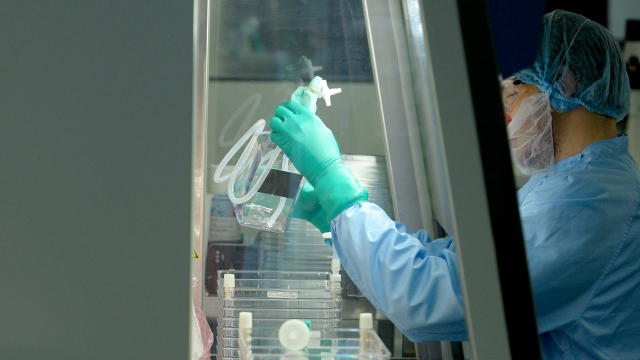
Spark Therapeutics’ promising gene therapy for vision loss could cost $1 million
http://ift.tt/2yfajJF
Spark Therapeutics’ gene therapy for an otherwise incurable rare eye disease, if approved, could be a major milestone for the disease itself as well as the field of gene therapy.
The therapy, Luxturna, was recommended for approval by a Food and Drug Administration advisory committee on Thursday, paving a path towards possible approval by mid-January. Just one administration of Luxturna could help treat the disease, called RPE65-mediated inherited retinal disease.
But the advance is expected to come with a cost almost without precedent: around $650,000 total, according to Stifel analyst Stephen Willey, though some Wall Street analysts say the therapy could cost nearly $1 million total.
Because Luxturna is the first of its kind, “key unknowns remain in terms of what commercialization will look like,” said RBC Capital Markets analyst Matthew Eckler. “Importantly, we think this will allow Spark
to shape the market and reimbursement process ahead of potential additional product launches.”
See: Spark Therapeutics shares jump 7.5% after FDA committee backs blindness treatment
Luxturna’s price tag is sure to raise some eyebrows. Projections have the therapy costing more than Novartis AG’s
high-profile Kymriah, which was the first gene therapy approved in the U.S. this past summer. At $475,000 for one-time treatment, Kymriah — intended for young people with a form of acute lymphoblastic leukemia — was criticized as being too expensive.
Read: Novartis’ CAR-T gene therapy, the first approved by FDA, to cost $475,000
Drug companies often point to a medication’s patient population size, as well as its level of innovation, when explaining the price tag.
Even in the world of rare disease, Luxturna has a relatively small patient population. Stifel’s Willey estimates that 106 patients will be treated in 2018, 371 in 2019 and 688 in 2020, amounting to sales of $62 million, $158 million and $193 million, respectively.
Luxturna is intended as an one-time therapy with a lasting effect. But as the field expands into new types of disease, “reimbursement models are likely to evolve,” RBC’s Eckler said.
Read: FDA committee reviews Spark Therapeutics’ gene therapy treatment for eye disease
Wall Street is bullish on the sector. Raymond James analyst Reni Benjamin declared on Wednesday that gene therapy is “a paradigm shift whose time has come.”
“While the gene therapy field has gone through nearly three decades of ups and downs, in our opinion, we are at the cusp of ushering in a new era of therapies that can address the underlying biology of many inherited disorders,” Benjamin said, adding, “within the next few years we expect multiple U.S. approvals of gene therapy products, with Spark’s Luxturna leading the pack in January 2018.”
Benjamin also cited the success of treatments being developed by Bluebird Bio Inc.
, AveXis Inc.
and BioMarin Pharmaceutical Inc.
. He rates other gene therapy players Spark Therapeutics, Voyager Therapeutics
and Adverum Biotechnologies
outperform and Audentes Therapeutics
as market perform.
But for diseases where treatment options already exist, getting gene therapies approved may be more difficult, Leerink analyst Joseph Schwartz said.
Therapies in areas like wet age-related macular degeneration or hemophilia “may be scrutinized with a different lens compared to rare diseases that lack treatment options,” Schwartz said. “As a result, we believe caution is warranted before making blanket extrapolations from the Luxturna experience to all of gene therapy… we expect regulatory clarity to emerge in the near future.”
Spark Therapeutics, which is also developing a gene therapy for hemophilia, had shares rise 5.9% in Thursday trade and decline 2.3% in Friday trade. The company did not respond to a request for comment.
business
via MarketWatch.com – Top Stories http://ift.tt/dPxWU8
